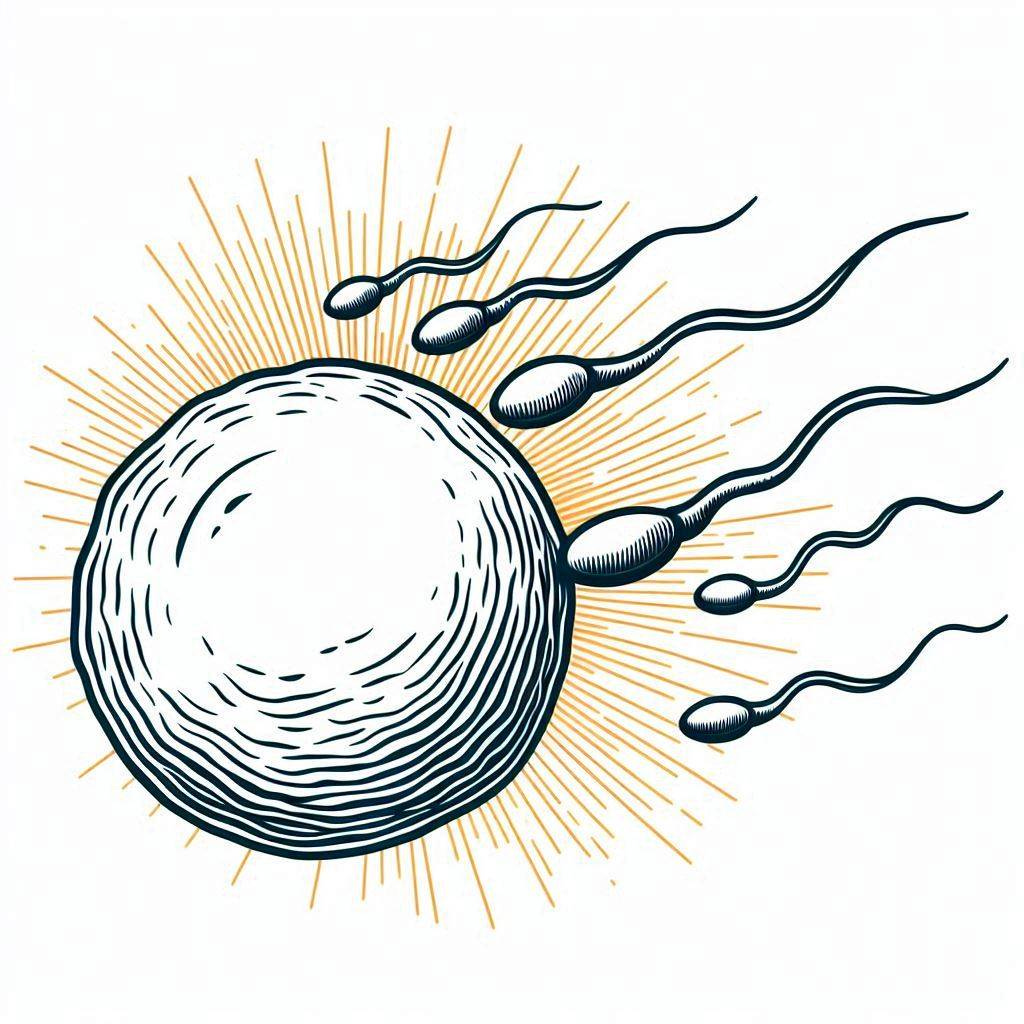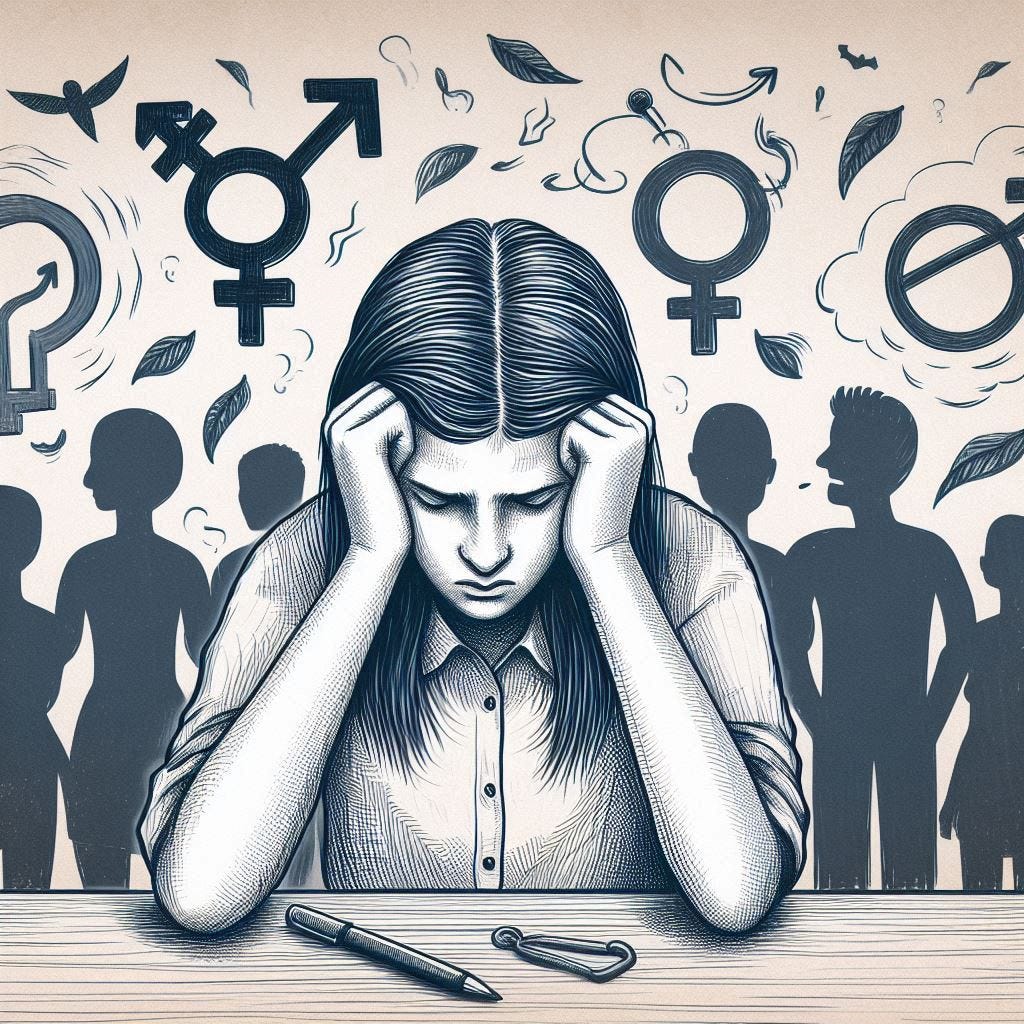Is a Trans Male a Woman?
Only the people can decide!
The right to free expression demands that individuals be free to identify as transgender.
However, it also demands that others be free to deny their identity.
Free speech protects hurtful speech. Gender activists typically allege that their critics want to erase them. But, rudeness is permitted in a free society; murder is not.
Transgenderism deserves understanding but, like any movement, it also deserves criticism.
Cultural phenomena – especially controversial ones – should be freely debated. When addressing societal problems is taboo, it becomes impossible to solve them. This thwarts progress.
Therefore, this article analyzes the merits and flaws of gender theory.
We must begin at the foundation of it all: biological sex.
Biological sex is, in short, binary. The categories male and female are distinct, based on gametes: reproductive cells. Human males produce small gametes (sperm); human females produce large gametes (eggs).
With notable exceptions, males carry XY chromosomes in their DNA; females carry XX chromosomes.
The exceptions are called intersex. Intersex individuals may carry chromosomal combinations such as X, XXY, or XXX in their DNA. However, they too produce only either gamete; cases of single individuals producing both, if they do exist, are extremely rare.
Some individuals cannot produce either gamete due to infertility, but because their bodies did develop towards that function, they may still be placed in either category.
Although sex is reliably binary, some theorists argue that gender is not.
The term gender originates from a controversial psychologist named Dr. John Money. According to him, social roles – and not biological sex – determine gender identity. He believed, for example, that a boy could become a girl if he were raised to be one from an early age.
His hypothesis translates into the popular phrase: gender is a social construct.
This, in turn, builds upon the phrase tabula rasa.
Tabula rasa means the mind as a blank slate. It proposes that humans are born without an innate nature. This implies we have no qualities, other than the ones we gather from experience.
If a child can indeed change from boy to girl, innate boyness or girlness cannot exist.
Tabula rasa is an attractive idea for the following reason:
If there were no human nature, then our species would be bound by nothing. We could infinitely change ourselves to become whatever we like. If there were a human nature, we would be shackled by it – since we have many shortcomings.
With an IQ of 75, for example, it will be difficult to become a rocket scientist.
Unfortunately, the blank slate theory has been debunked.
Aside from biological sex, there are many innate human qualities. Humans share, for example, an instinct for language. The same goes for personality traits across countries.
Nevertheless, this idea still permeates gender theory.
Gender theorists now use the blank slate theory even more radically. Money asserted that children's identities may be changed within a few years after birth. But, modern theorists insist that there is no limit to it whatsoever.
Gender supposedly is never fixed and always fluid; it may change infinitely and at any moment.
Dr. Judith Butler, a prominent gender theorist, insists that gender is performative:
According to Butler, it is not something we are, but something we perform. Individuals act a certain way, and in doing so they create their identities. By acting feminine, a transgender male thus becomes a woman.
This divorces gender entirely from biological sex, because the former becomes entirely malleable while the latter remains entirely immutable.
The problem is that tabula rasa logically contradicts the existence of transgender women:
A.
1. Woman is a transgender male’s innate gender.
2. Gender is fluid (and therefore, not innate); it may change at any time.
Statement A1 and A2 cannot simultaneously be true.
If gender is not innate (A1), a transgender male cannot be innately a woman (A2).
This is why transgender individuals typically experience gender dysphoria (GD). It implies a mismatch between their personality and their biological sex. If gender were indeed fluid, then this would not be an issue, since they could voluntarily change genders to ease their distress.
Gender activists decry that everyone should be their true selves, yet simultaneously deny anyone has a true self to begin with.
Their explanation of transgenderism thus proves insufficient.
If humans do not possess innate qualities, then they do not possess innately gender nonconforming qualities. The existence of GD proves that they do. The transgender male typically combines an innate male biological sex with an innate feminine psychology.
He is burdened by the fact that he cannot be innately female, but only innately feminine.
In agreement with Occam’s razor, statements A1 and A2 can be substituted by statements B1 and B2 respectively:
B.
1. A transgender male is innately feminine.
2. Human psychology changes in individuals; it develops over time.
These statements do not contradict each other and are therefore preferable.
A transgender male is not a biological female.
But, it remains debatable whether he should be referred to as a woman.
It depends on how you define the term:
C.
1. A woman is a feminine individual.
2. A transgender male is a feminine individual.
3. A transgender male is a woman.
D.
1. A woman is a biological female.
2. A transgender male is not a female.
3. A transgender male is not a woman.
If you subscribe to the statements under C, you will likely call transgender males women; if you subscribe to the statements under D, you will likely not.
Traditionally, woman has meant biological female. There is (conservative) merit in sticking by your definitions; there is also (progressive) merit in updating your definitions if, for example, politeness requires it. It depends upon the will of individuals.
Naturally, some will call transgender males women and others will not.
In both cases, it is fully their right, under freedom of expression.
Language develops through individual creativity. It cannot be altered by force; only throttled. It is wrong to force others to call transgender males women, but it is equally wrong to force transgender males to call themselves men.
It is up to each of us to determine how to apply the word woman, as it is with all words.
It is not a matter of whether the people should, but whether they will.
Note: this is part one of a series on gender theory. Part two examines its psychological origins. You can read it here.









